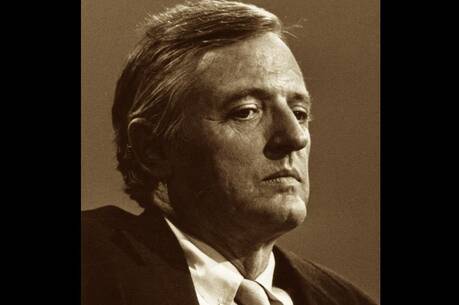From Good to Great
Sweetser, director of the Parish Evaluation Project in Milwaukee, Wis., begins by reminding us of what a covenant is: a bond of love that exists between God and God’s people. Then he speaks of the parish as a covenant, or an experience of the covenant that exists between God and us. There is an implicit critique of the high individualism and isolationism in both American spirituality and culture in general. The author focuses on the crisis of American Catholicism today, with the number of Catholics attending church on weekends now lower than the Protestant average. Yet despite the church’s crisis situation, Sweetser speaks of the new life that can emerge and how necessary the organism of the parish is for us to grow in this covenant with our fellow believers and God.
Much attention is devoted to the importance of a parish discovering its mission and being able to articulate that mission in clear, simple ways. The author suggests practical steps for a parish to follow in order to formulate its mission statement—a process that should involve as many people as possible. Sweetser recommends that once articulated, a mission statement must be celebrated and used regularly to remind the parish of where the covenantal community should be going.
In his last book, with its forward thinking on the subject, Sweetser stressed that the pastor can no longer be the sole focus of authority, that pastoral authority must be shared with one or two other people. (Such has been my own experience in pastoring for the last 13 years, working with a staff of ministry directors.)
The second section of Keeping the Covenant contains valuable information on structuring for more effective staff meetings. The author offers insightful guidelines about parish governance, dividing parish ministries into commissions, and guiding those commissions for decision-making, evaluation and planning on a common leadership night held monthly. One exceptionally good way to bring more people into leadership, Sweetser suggests, is to move toward a nomination weekend, in which parishioners are encouraged to nominate people for new leadership roles on various commissions as positions open.
At my parish, for example, there are eight leadership groups (we call them leadership communities). All of our ministry groups have been re-named ministering communities, to reflect—on a smaller scale—the experience of small Christian communities whenever any parish body meets. Sweetser suggests that a staff person be assigned to each of the commissions—serving as an agent of empowerment, rather than control, for the various areas of ministry within a given commission.
Sweetser also speaks of the pastoral council as the glue that holds the parish together, with the pastor truly sharing authority and responsibility with all its members and not diminishing the role of parish leaders to that of mere “advisors.” He also reiterates an idea from his previous book: that on leadership night both pastoral council and leadership commissions can meet in a two-and-a-half-hour period. (Some parishes, however, might find such a gathering unwieldy and perhaps unproductive.)
In terms of pastoral planning, Sweetser emphasizes, “asking the folks” is the first step. Parishes need to listen to their people—their needs, their wants, their desires, their experiences of their parish. He views parish leadership as both art and science: the art dimension being development of both intuition and imagination, the science dimension dealing with the culture of discipline that is needed in any organization if it is going to be effective.
Space precludes commenting on every area covered in this important book—e.g., adjusting to change, holistic stewardship, parish clustering, sharing time and talent, transition of a pastor and multicultural parishes. What underlies every area, however, are the twin themes of partnership and ownership. Such is the hallmark of a truly covenantal parish.
I strongly recommend Keeping the Covenant to pastors, staffs, leadership groups and pastoral councils. This book will help move parishes that are stuck, enabling them to grow and flourish.
This article also appeared in print, under the headline “From Good to Great,” in the March 17, 2008, issue.








